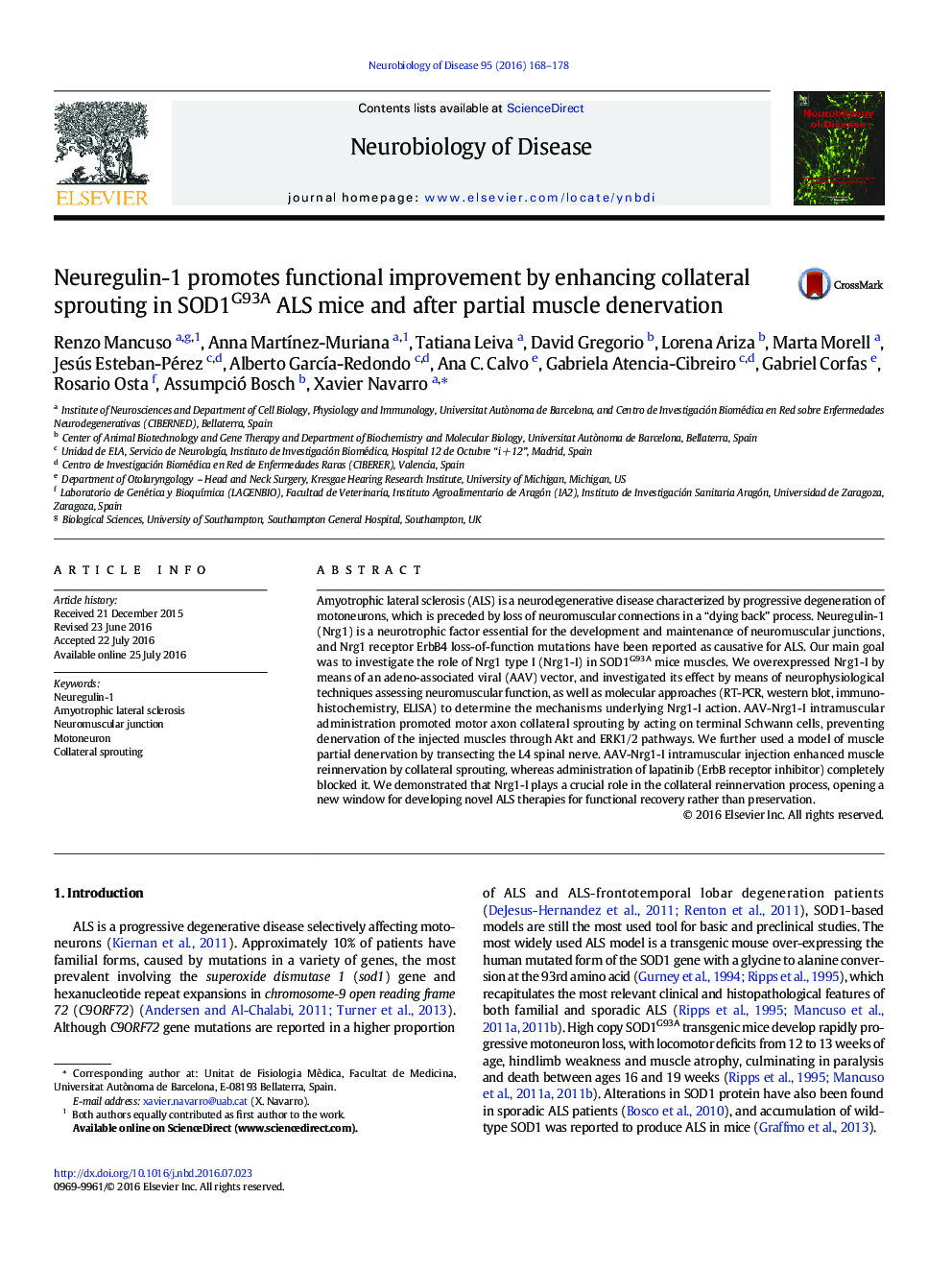| Article ID | Journal | Published Year | Pages | File Type |
|---|---|---|---|---|
| 3069243 | Neurobiology of Disease | 2016 | 11 Pages |
•Nrg-1/ErbB signaling is altered in ALS patients.•Nrg-1 is critical for the plasticity of the neuromuscular junction.•Nrg-1 produces functional compensation by promoting collateral reinnervation in ALS.
Amyotrophic lateral sclerosis (ALS) is a neurodegenerative disease characterized by progressive degeneration of motoneurons, which is preceded by loss of neuromuscular connections in a “dying back” process. Neuregulin-1 (Nrg1) is a neurotrophic factor essential for the development and maintenance of neuromuscular junctions, and Nrg1 receptor ErbB4 loss-of-function mutations have been reported as causative for ALS. Our main goal was to investigate the role of Nrg1 type I (Nrg1-I) in SOD1G93A mice muscles. We overexpressed Nrg1-I by means of an adeno-associated viral (AAV) vector, and investigated its effect by means of neurophysiological techniques assessing neuromuscular function, as well as molecular approaches (RT-PCR, western blot, immunohistochemistry, ELISA) to determine the mechanisms underlying Nrg1-I action. AAV-Nrg1-I intramuscular administration promoted motor axon collateral sprouting by acting on terminal Schwann cells, preventing denervation of the injected muscles through Akt and ERK1/2 pathways. We further used a model of muscle partial denervation by transecting the L4 spinal nerve. AAV-Nrg1-I intramuscular injection enhanced muscle reinnervation by collateral sprouting, whereas administration of lapatinib (ErbB receptor inhibitor) completely blocked it. We demonstrated that Nrg1-I plays a crucial role in the collateral reinnervation process, opening a new window for developing novel ALS therapies for functional recovery rather than preservation.
